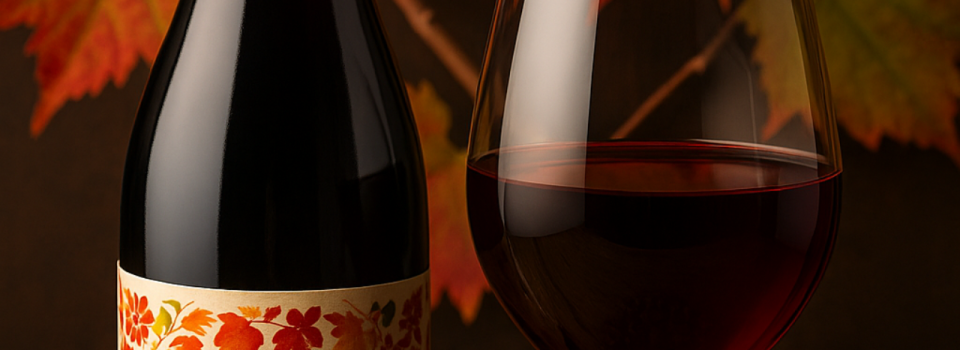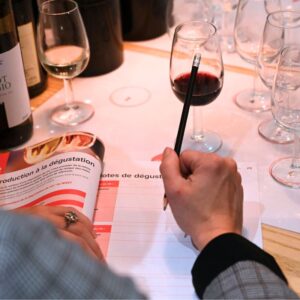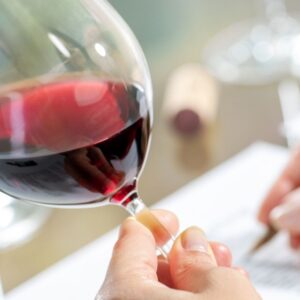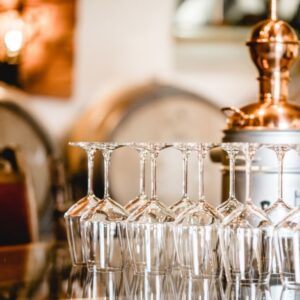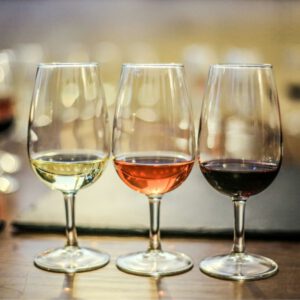Beaujolais often evokes festive images: a young wine opened every third Thursday of November, light-hearted conversations, and bright red-fruit aromas.
Yet behind this sometimes simplified reputation lies a region far more complex, rich, and nuanced than most people imagine — a vineyard capable of producing age-worthy wines, character-driven crus, and some of the most compelling expressions of Gamay in Europe.
The goal of this article is to go beyond the clichés.
Understanding Beaujolais is to understand a unique terroir, a little-known history, a misunderstood grape variety, and a know-how currently experiencing a true revival. It also means learning what separates a simple “Nouveau” from a great wine crafted in renowned crus such as Moulin-à-Vent, Fleurie, or Morgon.
In the sections that follow, we will explore essential foundations:
– the history and evolution of Beaujolais,
– its terroirs and geological specificities,
– the central role of Gamay,
– the different wine styles produced in the region,
– our tasting recommendations,
– and finally, our curated selection of Beaujolais Nouveau 2025.
If you want to take your wine knowledge further, you can also explore our professional wine training programmes, available in Paris, Marseille, and online. These courses will deepen your understanding of terroir, tasting techniques, and international wine styles. They can be funded through the CPF thanks to our professional English certifications (CLOE and LTE). You may then take your WSET exam as an additional option.
1. Beaujolais: A Vineyard Worth (Re)Discovering
For decades, Beaujolais was almost exclusively associated with Beaujolais Nouveau — a primeur wine launched in the 1980s as a global marketing phenomenon. This overnight success boosted its fame… but sometimes overshadowed the true depth and diversity of the region.
Over the past twenty years, however, Beaujolais has undergone a genuine qualitative renaissance: a return to traditional practices, a rise in independent winemakers, renewed focus on crus and terroir expression, and increasing recognition in international rankings. Beaujolais is no longer just a celebration — it is a vineyard proudly reclaiming its identity.
Nestled just south of Burgundy, between Mâcon and Lyon, the Beaujolais AOC enjoys a unique geographical position. Although administratively linked to the Bourgogne–Franche-Comté region, it has a distinct personality shaped by its signature grape, its granitic soils, and its own historical evolution. This proximity often creates confusion… but also sparks curiosity in wine lovers eager to understand what connects — and separates — these neighboring regions.
A few figures help paint the picture: around 14,500 hectares of vines, 12 appellations (Beaujolais, Beaujolais-Villages, and 10 crus), nearly 2,000 producers, and a production largely dominated by red wines. This diversity makes Beaujolais one of the most dynamic wine regions in France, capable of combining volume, innovation, and excellence.
Rediscovering Beaujolais means moving beyond clichés to appreciate its true richness: a French wine region standing at the crossroads of tradition and revival, where Gamay thrives like nowhere else.
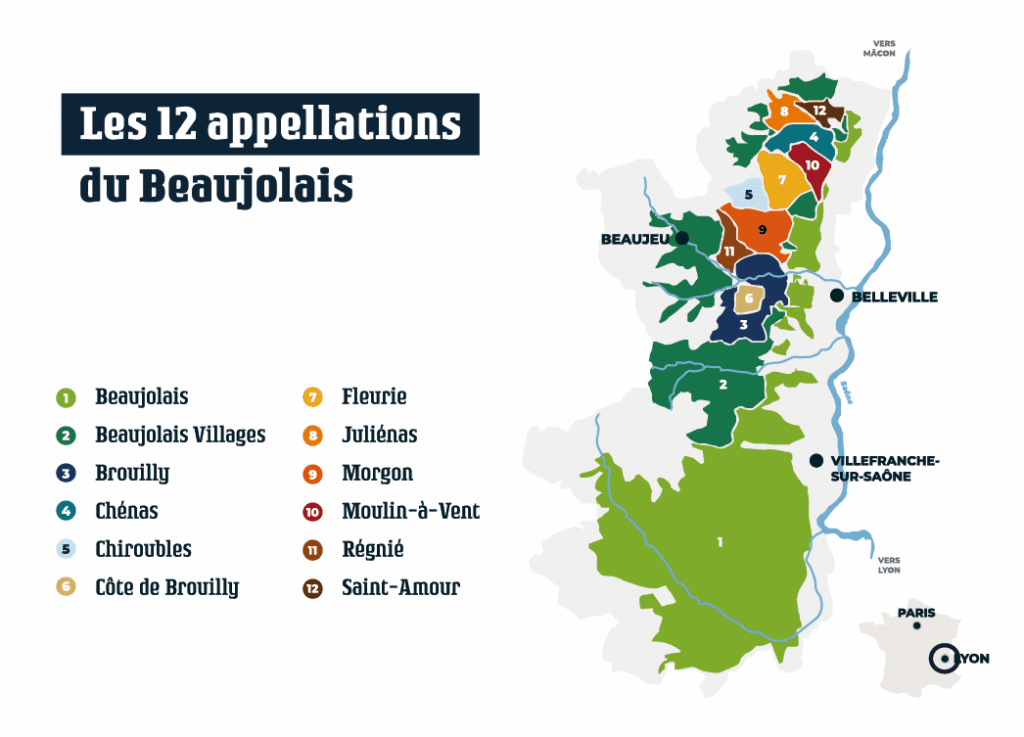
2. The King Grape: Gamay
At the heart of Beaujolais lies one dominant grape variety: Gamay Noir à Jus Blanc.
Born in the Middle Ages, likely in the Burgundy region, Gamay was gradually pushed south over the centuries until it found its true home in Beaujolais — the terroir where it reveals its full potential. Today, it embodies the soul of the region: accessible, expressive, versatile… and often underestimated.
Gamay owes much of its uniqueness to the granite and schist soils that define the Beaujolais landscape.
These poor, acidic, well-drained rocks force the vine to push its roots deep underground, resulting in wines with greater aromatic concentration and finer tannins. On these terroirs, Gamay naturally gains minerality, tension, and freshness — qualities that are virtually impossible to replicate elsewhere. This “Gamay + granite” duo is what creates the unmistakable Beaujolais signature.
In the glass, Gamay reveals a distinctive aromatic palette:
- crisp red fruits (cherry, raspberry, redcurrant)
- floral notes (peony, violet)
- subtle spicy or peppery touches
- a structure that ranges from juicy and light to deep and textured
While entry-level wines offer joyful, fruit-driven profiles, the crus reveal remarkable depth, complexity, and even ageing potential.
Long dismissed as a “simple” grape, Gamay is now enjoying a well-deserved renaissance.
Through improved viticulture, greater respect for terroirs, and diverse winemaking styles, it is increasingly recognized as one of the most exciting grape varieties in France today.
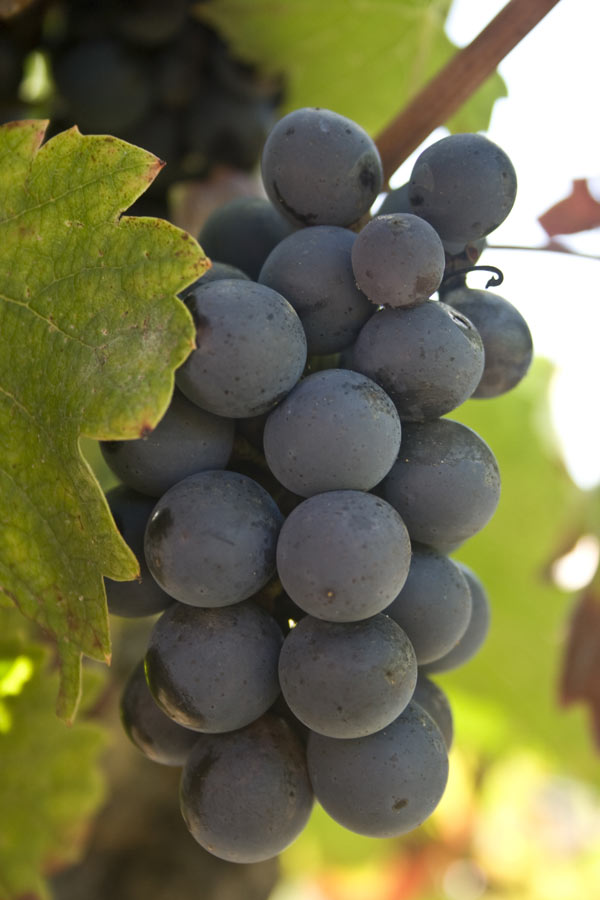
3. The Different Styles of Beaujolais Wines
Beaujolais is far from a uniform region — it is actually one of the most diverse wine areas in France.
Its identity is structured around three major styles, ranging from joyful, easy-drinking wines to serious cuvées that can rival some of Burgundy’s finest bottles.
Beaujolais “Classic”: light, fruity, instantly enjoyable
This is the region’s most iconic style: cheerful, fruit-forward wines often made using semi-carbonic maceration, the signature winemaking technique of Beaujolais.
On the nose: cherry, strawberry, banana or “candy” notes depending on fermentation.
On the palate: freshness, lightness, maximum drinkability.
These are wines for friendship, apéritif moments, and simple, joyful food — perfect for rediscovering Gamay in its purest form.
Beaujolais Villages: added structure and complexity
Produced across 38 carefully selected communes, Beaujolais Villages represents a step up in concentration, structure, and overall depth.
Thanks to higher-quality soils (granite, schist, granitic sands), these wines tend to be:
- more intense
- more layered
- with firmer and more present tannins
This is where Beaujolais starts becoming a gastronomic partner — often offering outstanding value for money.
The 10 Crus of Beaujolais: ten identities, one grape
At the top of the hierarchy, the 10 Beaujolais crus (all red) showcase Gamay’s ability to produce serious, complex, and sometimes age-worthy wines.
Here is a quick overview:
- Brouilly: generous, fruity, approachable.
- Côte de Brouilly: more structured, with smoky and mineral notes.
- Régnié: crisp, juicy, raspberry-driven.
- Chiroubles: light, floral, the most delicate of the crus.
- Fleurie: elegant, perfumed, silky — often described as the “feminine” cru.
- Morgon: powerful, structured, developing kirsch and wet-stone notes with age.
- Moulin-à-Vent: serious, dense, the most “Burgundian”; excellent ageing potential.
- Chénas: rare, fleshy, spicy.
- Juliénas: intense, structured, with dark-fruit aromatics.
- Saint-Amour: charming, floral, sometimes more serious than its name suggests.
By combining freshness, diversity, and depth, the crus clearly show how Beaujolais extends far beyond its festive image and deserves recognition as a major French wine region.
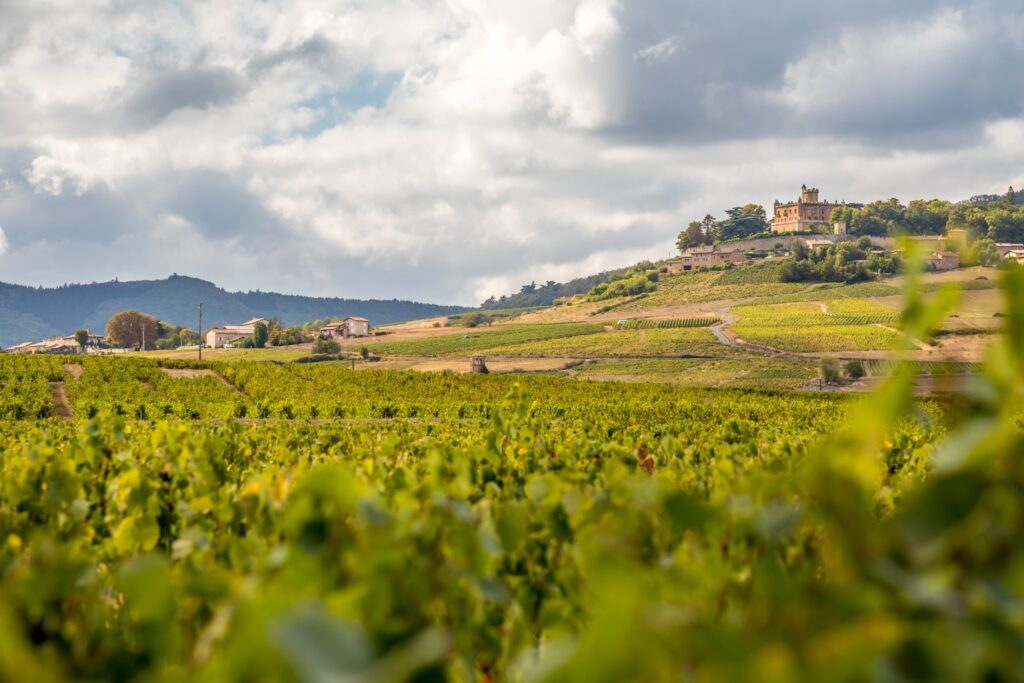
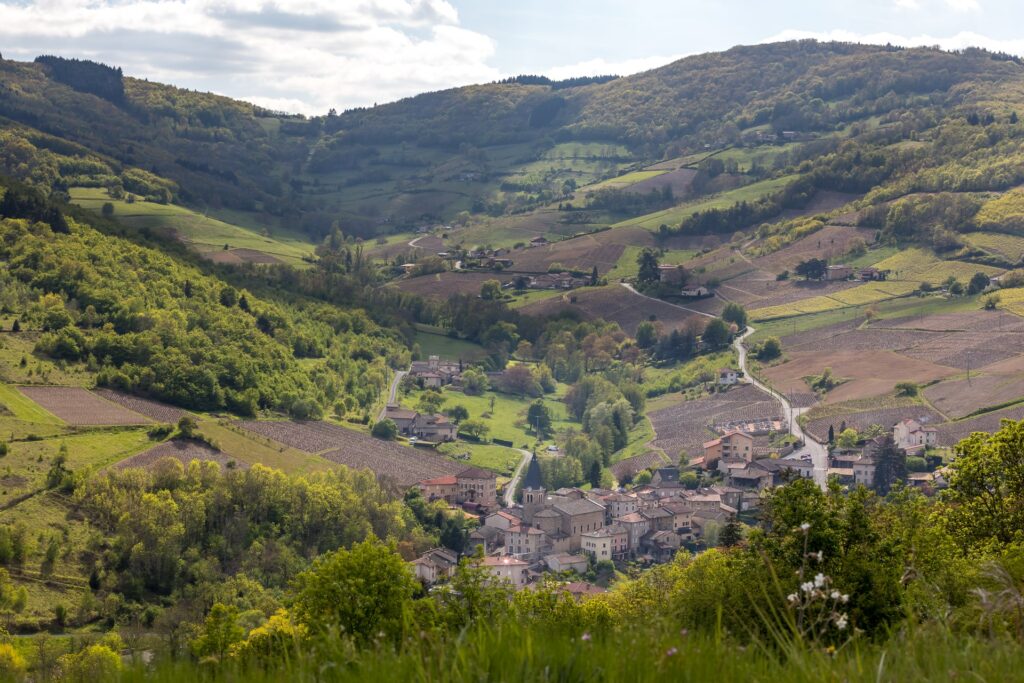
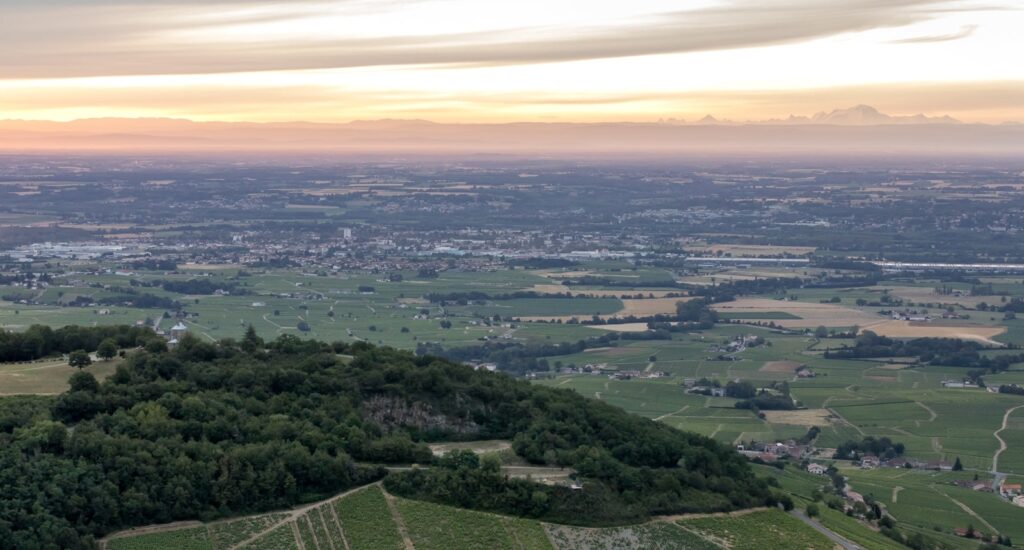
4. Beaujolais Nouveau: Tradition, Key Dates & Winemaking Secrets
Beaujolais Nouveau is arguably one of the most famous wine events in the world.
But behind the excitement of the third Thursday of November lies a real history, a unique winemaking technique… and major differences between great primeur wines and rushed, low-quality versions.
A story that begins in 1951
It all started in 1951, when French authorities officially authorised the early release of Beaujolais primeur wines.
The idea was simple:
- allow growers to sell part of their production quickly after harvest,
- boost the local economy,
- and create a festive moment around the new vintage.
Within a few years, the phenomenon went global. Posters, parties, marketing campaigns — Beaujolais Nouveau became a worldwide symbol of conviviality and annual renewal.
The famous third Thursday of November
Since 1985, the release date has been fixed:
Beaujolais Nouveau is launched every year on the third Thursday of November, at 00:01.
This simultaneous release creates a global event: Tokyo, New York, Paris… all opening bottles at the same moment.
The winemaking secret: carbonic maceration
Carbonic maceration is the emblematic technique behind Beaujolais Nouveau.
Unlike traditional winemaking — where grapes are pressed and the juice ferments — this method ferments whole, uncrushed berries in a carbon dioxide–rich environment.
How it works (WSET-style explanation)
- Whole bunches are placed in a closed tank and filled with CO₂.
- Inside each intact berry, intracellular fermentation begins:
- sugars convert partially to alcohol,
- specific fruity aromas develop (strawberry, raspberry, banana),
- acidity softens slightly,
- tannins remain low because the skins are barely extracted.
- After several days, the berries burst naturally.
- The juice is then fermented traditionally to complete the winemaking process.
The result in the glass
- bright, lightly extracted colour
- very soft tannins, supple mouthfeel
- intensely fruity aromas (banana, strawberry, red fruits, candy-like notes)
- an easy-drinking, joyful style meant to be enjoyed young
This technique is what gives Beaujolais Nouveau its playful, juicy, ultra-fruity character.
When well executed, it can also produce surprisingly precise and technically clean wines.
Beaujolais Nouveau is not a wine to age: it is designed as an instant pleasure, best enjoyed within months of release.
Good Nouveau vs. rushed, low-quality Nouveau
In the 1990s, Beaujolais Nouveau suffered a poor reputation — often deserved.
But today, the best producers craft primeur wines with purity and intention.
A good Beaujolais Nouveau delivers:
- juicy, clean Gamay
- fresh, natural fruit (never artificial)
- a lively acid line
- careful work on harvest and fermentation
A poorly made Nouveau shows:
- artificial aromas (over-the-top banana, chemical candy)
- lack of freshness and tension
- sloppy harvesting
- imbalance or heaviness
The golden rule?
👉 Choose a committed grower, not a marketing name.
A simple wine… but not a simplistic one
Beaujolais Nouveau isn’t meant to compete with the region’s grand crus.
Its role is different — to celebrate harvest, mark the new vintage, and bring people together around a bright, joyful, unpretentious wine.
A popular pleasure that has become a cultural ritual.
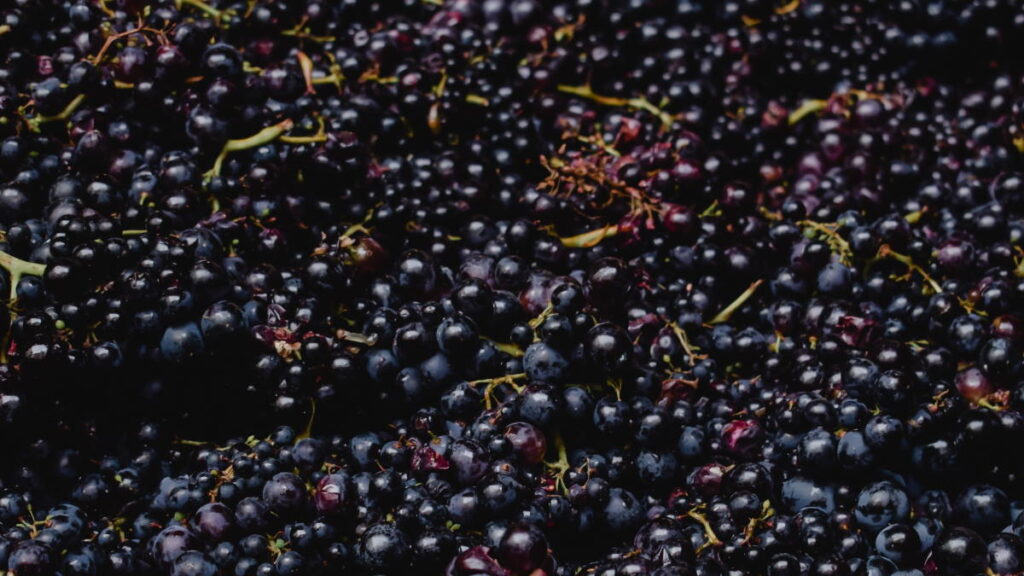
5. How to Taste Beaujolais (and What to Pair It With)
Supple, fruity, juicy… Beaujolais is one of the most versatile French wines at the table.
But to reveal its full potential, a few simple guidelines can make all the difference.
Ideal Serving Temperature & Best Glassware
Serving temperature: 12–14°C (53–57°F)
This is cooler than most red wines — and for good reason. Gamay thrives on freshness.
If served too warm, the aromas become heavy; too cold, the fruit tightens and the tannins feel harsher.
Which glass to use?
- Beaujolais & Beaujolais Villages: INAO glass or a small Burgundy-style glass
- Crus: a wider Burgundy bowl to allow floral and spicy aromas to open
Glass shape matters: Gamay’s aromatic precision and delicacy benefit from room to evolve.
Must-Try Food Pairings
Gamay is a true gastronomic chameleon.
Here are the dishes where it shines the most:
Charcuterie & Appetizers
The perfect duo: saucisson, rillettes, terrines, pâtés.
The wine’s fresh fruit cuts through the fat with elegance.
Cheese
Works beautifully with:
- fresh goat cheese
- Tomme de Savoie
- Saint-Marcellin
Gamay’s light structure preserves these cheeses’ delicacy without overpowering them.
Autumn Dishes
- roasted poultry
- sautéed mushrooms
- pot-au-feu and other slow-cooked dishes
The wine’s bright red fruit brings lift and contrast to warm, comforting flavours.
Asian Cuisine
Beaujolais + Thai or Vietnamese dishes = a guaranteed success.
Gamay’s juicy texture pairs wonderfully with sweet-savoury sauces and gentle spices.
More Surprising Pairings
To impress your guests:
- Beaujolais Nouveau + vegetarian burger
- Fleurie or Morgon + tuna tataki
- Brouilly + margherita pizza
Simple pairings, but remarkably effective.
How to Identify a Good Producer
Three essential criteria:
1. Meticulous Vineyard Work
Manual harvests, respect for old vines, sustainable viticulture — these are often what separate a good Beaujolais from a great one.
2. Controlled, Thoughtful Winemaking
Intelligent, not systematic, use of carbonic maceration.
Transparent fruit, no artificial aromas, clean fermentations.
3. Reputation & Consistency
A reliable producer delivers quality over multiple vintages.
The best names in the region stand out through regularity and precision.
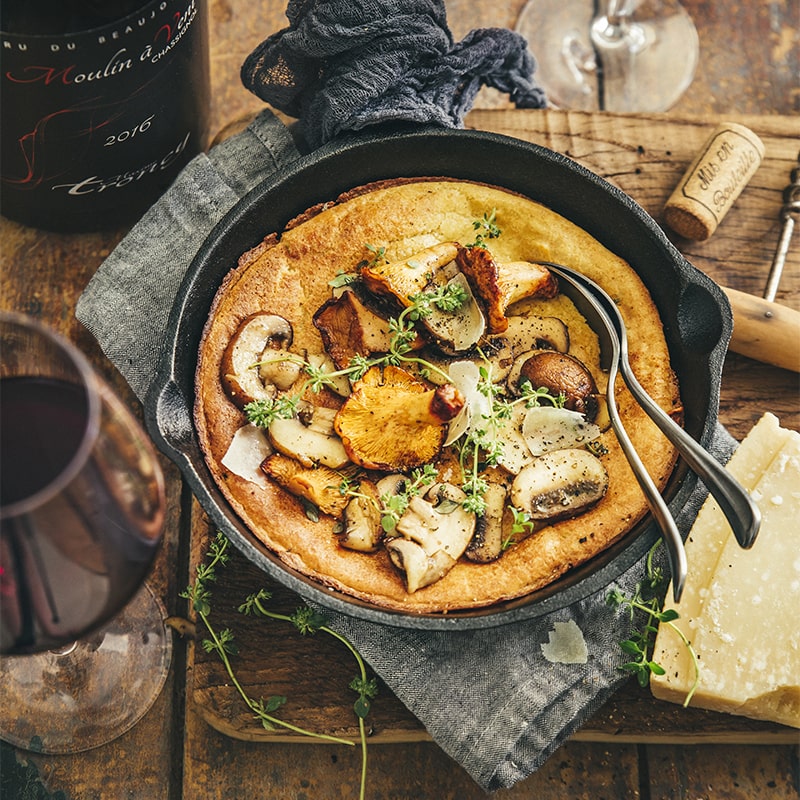
6. The Weeno Selection – Beaujolais Nouveau 2025
Every year, our team tastes dozens of samples to curate a selection of Beaujolais Nouveau wines that go far beyond hype or marketing trends.
Our goal is simple: highlight serious, well-made, terroir-driven cuvées that break away from the cliché of “gadget wine”.
Our selection criteria
- Quality vineyard work (manual harvest, sustainable or organic viticulture)
- Purity of fruit — a Nouveau should be generous but never artificial
- True Gamay expression — freshness, precision, floral lift
- Identity — each cuvée must say something meaningful about its terroir
Here is our 2025 shortlist — compact, precise, and without any unpleasant surprises.
1. Domaine Lapalu – “Beaujolais Nouveau Vieilles Vignes 2025”
Aromatic profile: fresh raspberry, redcurrant, violet, subtle spice
Style & AOC: Beaujolais Nouveau – old vines (50+ years)
Indicative price: €15–18
Why we love it:
Year after year, it proves that a Nouveau can be deep, precise, and vibrant.
Unexpected structure for a primeur — a benchmark for serious Beaujolais Nouveau.
2. Jean Foillard – “Beaujolais Nouveau Séléné 2025”
Aromatic profile: juicy red berries, rose petals, sweet spices, crystalline palate
Style & AOC: Beaujolais Nouveau (natural vinification, no added sulphur)
Indicative price: €16–20
Why we love it:
One of the purest, most digestible Nouveaux today.
A living, expressive wine, faithful to Foillard’s style: finesse above all.
3. Domaine des Terres Dorées (Jean-Paul Brun) – “L’Ancien Nouveau 2025”
Aromatic profile: crunchy cherry, wild strawberry, delicate floral note
Style & AOC: Beaujolais Nouveau – Gamay vinified “Burgundy-style”
Indicative price: €13–16
Why we love it:
A Nouveau with minimal carbonic signature: clean, focused, almost “Burgundy-lite”.
Perfect for wine lovers who want a serious, gastronomic primeur.
4. Château Cambon – “Beaujolais Nouveau 2025”
Aromatic profile: peony, crushed strawberry, gentle peppery lift
Style & AOC: Beaujolais Nouveau – natural / traditional style
Indicative price: €12–14
Why we love it:
Immediate freshness, total drinkability, zero artifice.
The pure pleasure of Nouveau — but with real backbone and charm.
5. Domaine du Vissoux – Pierre-Marie Chermette – “Primeur 2025”
Aromatic profile: raspberry coulis, violet flowers, fresh and mouthwatering finish
Style & AOC: Beaujolais Nouveau – precise vinification, brilliant fruit
Indicative price: €11–14
Why we love it:
A model of balance: juicy but never sweet, fruity but never heavy.
Perfect to start the evening… or finish the bottle.
A selection that reveals the real Beaujolais
These five cuvées show what Beaujolais Nouveau can achieve when taken seriously:
pure fruit, freshness, terroir expression, and irresistibly high drinkability.
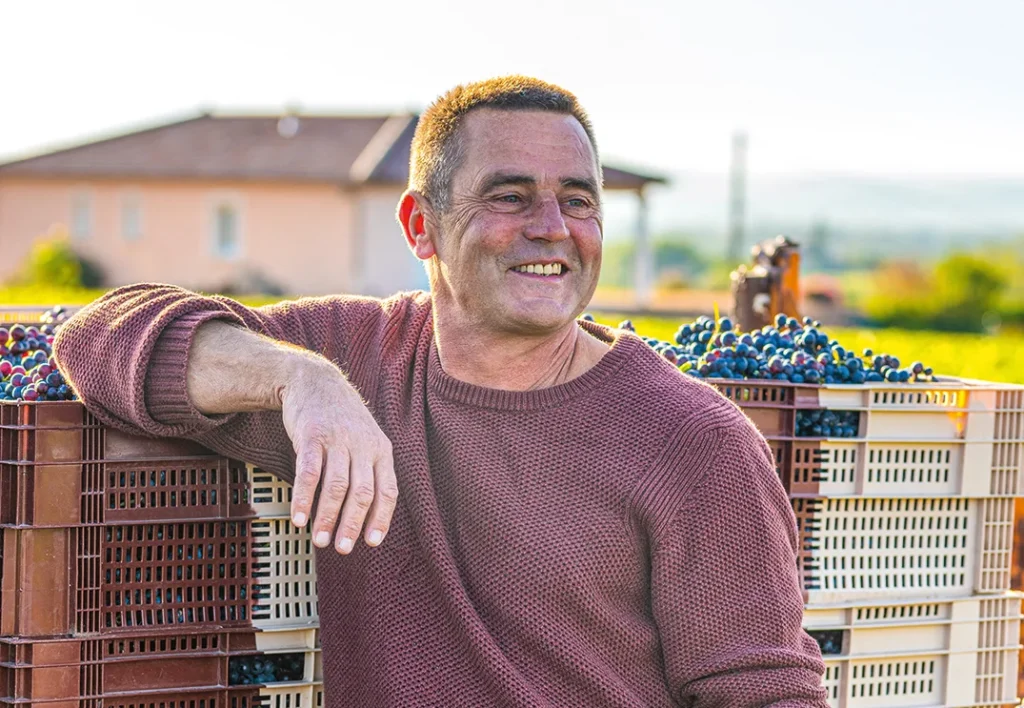

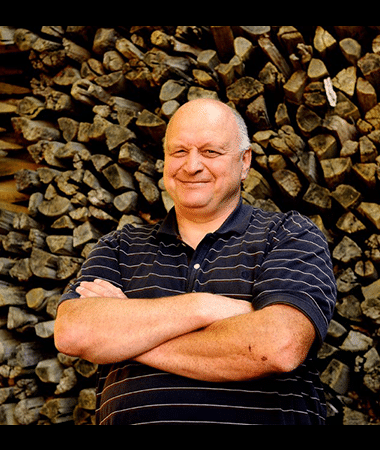
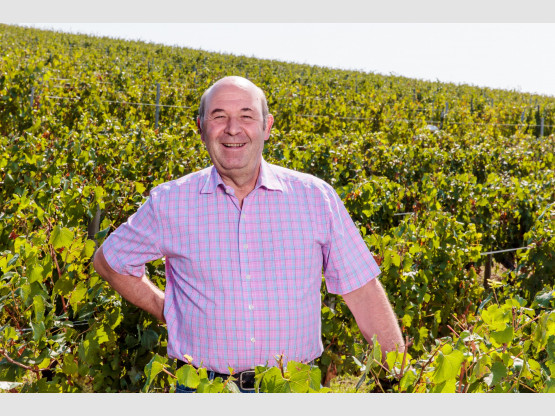
7. The Future of Beaujolais: Renewal, Terroir & Sustainability
Long reduced to its festive image, Beaujolais is now undergoing a profound qualitative transformation.
A new generation of winemakers, a shift toward sustainable viticulture, and a renewed focus on terroir are reshaping the region from the ground up.
Beaujolais is no longer content with being “pleasant.”
It is becoming ambitious, technical, and increasingly age-worthy.
A Significant Move Upmarket
Beaujolais is no longer just the land of light, easy-drinking reds.
In the crus—Morgon, Moulin-à-Vent, Côte de Brouilly, Juliénas and others—winemakers are crafting more structured cuvées, often matured for longer periods and capable of aging 10 to 15 years.
Today, producers are experimenting with:
- Parcel selection and micro-cuvées
- Controlled ageing (barrels, large foudres, amphorae)
- Low-intervention vinification
The results?
Wines that can rival certain Burgundy Pinot Noirs, yet remain far more accessible in price.
A Return to Sustainable Viticulture
Beaujolais is one of the most dynamic French regions in terms of transitioning to environmentally respectful viticulture.
This movement includes:
- A sharp rise in organic and biodynamic farming
- A drastic reduction in chemical inputs
- Soil work becoming central again
- Renewed interest in native yeasts
Pioneering estates—Foillard, Lapierre, Thévenet, Breton, among others—laid the foundation in the 1980s.
Today, this philosophy is widely embraced. Beaujolais is emerging as a model of sustainability in France.
The New Generation: Creativity & Identity
The modern revival of Beaujolais owes much to its younger winemakers.
Trained in Burgundy, the Loire Valley, or abroad, they return with a clearer, more precise, and more confident vision.
Their philosophy:
- Showcase the pure fruit of Gamay
- Reveal the granite-driven minerality
- Work more naturally and gently
- Express each lieu-dit with authenticity and finesse
They’re not afraid to experiment with:
- Extended ageing
- Gentle macerations
- Amphorae
- Single-parcel cuvées
- Micro-vinifications
These young winemakers are shaping the Beaujolais of tomorrow — a region where Gamay becomes a true terroir grape, capable of remarkable depth and emotion.
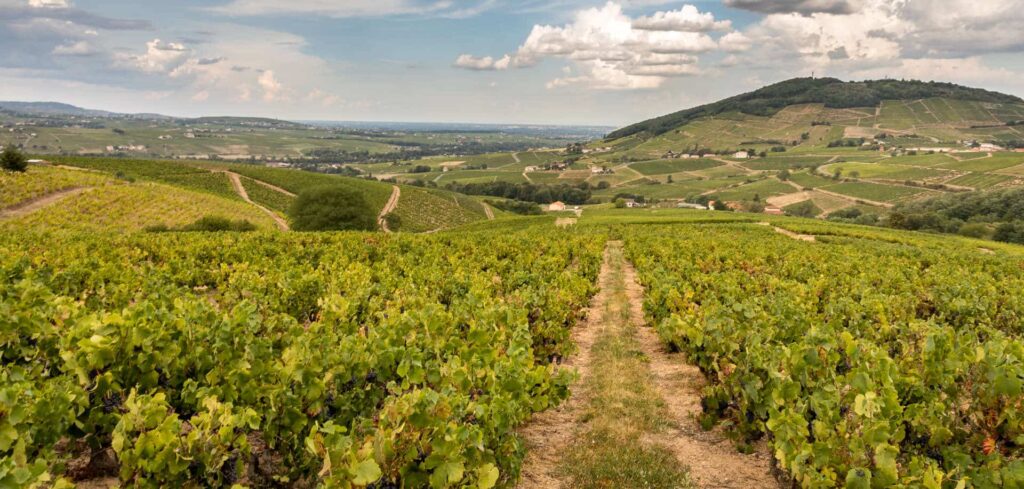
Beaujolais is far more than a festive wine…
It is a deeply diverse, accessible region — one that is currently experiencing a true renaissance.
Between the vibrant energy of Gamay, the variety of its terroirs, the rise of a new generation of winemakers, and a growing commitment to sustainable viticulture, the region has moved well beyond the folklore of “Nouveau Night.”
If there are three things to remember about Beaujolais:
- its diversity — from crunchy, juicy fruit to age-worthy crus,
- its accessibility — a remarkable quality-to-price ratio,
- its renewal — a clear move upmarket, a focus on terroir, and a shift toward sustainability,
…then it becomes obvious that Beaujolais deserves a place of choice on our tables and in our cellars.
Beaujolais is not a vineyard of the past.
It is a vineyard of the future — one where depth, precision, and identity are rediscovered year after year, after being underestimated for far too long.
👉 Want to go further?
Deepen your tasting skills and explore the world’s great wine regions with our professional wine courses in Paris, Marseille, or online — ideal for enthusiasts and professionals alike.
Our programs are eligible for CPF funding through CLOE or LTE professional English certifications. You can then take your WSET exam separately if you wish.
